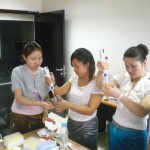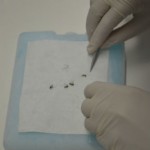Dengue surveillance in Lao PDR
Project leader: Dr. Malayvanh LAO
Fundings:
The Division “International”, Institut Pasteur, Paris (grant: ACIP 2011-16).
Emergency funds for 2013 dengue epidemic:
– ST Bank
– Phongsavanh Bank
– Exotissimo travel Co.,ltd
– Lao Brewery Co., LTD
– Phu Bia Mining limited
– Banque Franco -Lao ltd
– Emergency fund, Division “international”, Institut Pasteur, Paris.
– AusAID/WHO
Partners:
Institut Pasteur du Cambodge (Ph Buchy ; V Duong).
Institut Pasteur de Paris (V. Caro ; J-M. Thieberge).
Institut de la Francophonie pour la Médecine Tropicale (S. Sompavanh ; Y. Buisson ; F. Quet).National Centre for laboratory and epidemiology (D. Phonekeo; K. Pakapak). Clinical network: Setthathirat hospital; Military hospital 103; National police hospital 109; Children hospital; Friendship Hospital; medical centre of the French Embassy.
Description of the project and objectives:
Background: South-eastern Asia is considered as a hyper endemic area for dengue viruses. Despite this classification, precise data regarding viral serotypes and genotypes are lacking in Lao PDR. A surveillance network has been established to reinforce diagnostic capacities in order to document suspected dengue cases and improve the understanding of dengue epidemiology.
Objectives: To reinforce dengue diagnosis and surveillance in coordination with the national central laboratory in order to provide the Lao Ministry of Health updated information on dengue confirmation rates and on serotypes and genotypes of dengue viruses circulating in Lao PDR.
Methodology:
IP Laos coordinates a network of 5 hospitals and a private consultation centre. Patients suspected to present dengue infection provide samples that are investigated for dengue virus markers. Results are sent to the clinician. Information on number of confirmed cases, serotypes and patients mapping are sent weekly to the Ministry of Health. Viral isolation is periodically carried out on selected sera for partial or full genome sequencing.
Results:
Since 2012, the permanent surveillance of dengue in Vientiane city allowed the identification and determination of the proportions of dengue virus serotypes. This surveillance system demonstrated, in June 2012, the emergence of dengue serotype 3 that rapidly superseded serotypes 1 and 2. This switch in viral serotypes was predictive of the present epidemic in Lao PDR.
Sequencing data provided information on the origin of the strains. For instance, dengue 3 strains in Laos grouped in the genotype II and displayed high genetic identity with strains isolated in Myanmar in 2009, suggesting a possible importation from that country since 2009.
Mapping of the cases is used to guide entomologic investigations and vector control campaigns. Dengue strains were isolated from different mosquito species improving knowledge on the transmission cycles of dengue virus in Laos.
Publications:










